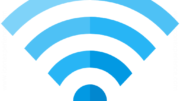Network problems are everywhere. Obviously your computer network’s ok right now, or you wouldn’t be reading this article. However, you might be having problems with your satellite receiver, phone, or any other device, you might have had a friendly tech say, “What’s your IP address?”
What is IP addressing anyway?
There are literally millions of connected devices. Some are servers, and they have “friendly names” like www.solidsignal.com. Most computers are not servers, and every single one of them needs to have a unique address. Why? Communications flows from your computer back and forth to the whole internet, and that information has to have a route to take. Without an address, that information could not get to your computer.
Every computer, including servers, have an address, and every address looks like four numbers separated by periods. There’s a lot more to that, but that’s the subject of another article. There are some ranges of numbers that you should probably know about, though… they are “local” addresses. Computers and other devices that aren’t servers don’t need to be reachable directly… they use a router to connect to the internet and the router is the only part that needs a specific, unique address.
IPv4 or IPv6
For most of its history, every computer on the internet was referred to by an address with four sets of numbers. Each number was between 0 and 255. This was known as “IPv4” or the fourth version of the internet protocol. The problem became obvious about seven years ago that we were running out of addresses. In order to address this, the computers on the actual internet started using longer addresses. IPv6 addresses are muvh longer and instead of looking like “10.37.16.185” they look like “2001:0db8:0000:0042:0000:8a2e:0370:7334.”
However, “local” computers just don’t need to do that so most local networks, like the one you’re using now, have stayed with the IPv4 standard. Modern computers and browsers have no problem using IPv4 for local computers and IPv6 for the internet.
Class C local addresses
When IPv4 was used to run the internet, there was a naming scheme in place to try to keep it all organized. Class A addresses were designated for the all-important servers that actually run the internet. Class B addresses were used for large businesses. Finally, Class C addresses were designed to be used at home. In the whole world there can only be one server for each Class A address, but Classes B and C can be used over and over because those computers are separated from the rest of the internet by routers.
Of course this whole scheme is irrelevant now that everyone uses IPv6 for internet servers, but many homes, offices and even large businesses use these naming conventions to make it easier to manage the computers on their networks. The class C addresses used in homes and offices all start with 192.168. The other two numbers vary, so a local address generally looks like 192.168.1.106 or something similar. The router keeps all these addresses in a table and when you need something from the internet, it knows where to find you.
When something goes horribly, horribly wrong
Most devices get their addresses automatically from a router. However, if there is no router available, most devices use a method called link-local addressing. If a computer uses link-local addressing, it makes up its own address and looks around to see if other computers that it finds are using the same address. That way, if the router goes down, the other devices can still talk to each other. Link-local addressing always start with 169.254. That range is completely reserved for link-local addresses.
If there is a router, it looks around for devices with link-local addresses and automatically assigns an address starting with 192.168. That process is called DHCP. So, if your device has an address starting with 169.254, something has gone horribly wrong.
Devices with link-local addressing can’t connect to the internet, and without the internet, that means no browsing, no Pandora, no Instagram, no Video On Demand, and so on. When you look at tests, it looks like you’re connected… except you’re not.
If you see a device with an address of 169.254.1.125, or any address starting with 169.254, there are some steps you should be taking.
-
Start by testing another device on the network. Can you get on the internet on another device? If not, the problem may be with the router or internet. Reboot the router.
-
If you can’t connect after rebooting the router, see if someone else in your neighborhood has internet service. It’s rare, but cut cables and outages do happen.
-
If you can connect using another device, try resetting the problem device, or resetting the network settings on the device. If this doesn’t work, there might be a cut cable or some bad hardware somewhere.
Network problems are hard to fix, but the first step is knowing what kind of problem exists. If you find your device has an address of 169.254…. you know where to start.





